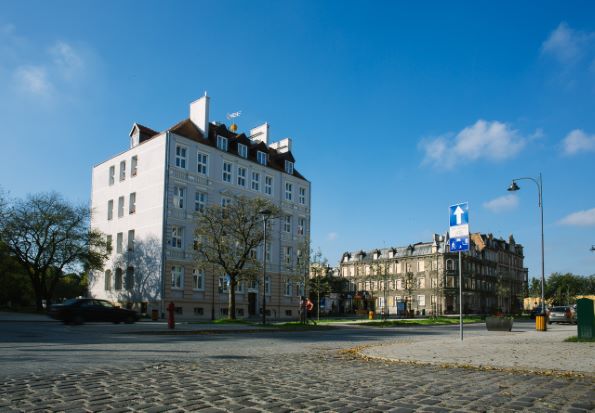The revitalization of the Gdansk’s Lower Town district included investments in infrastructure and social fabric as well as social and cultural activities to tackle the specific problems in this area. All operations were aimed at fighting against social exclusion, with some activities focusing more particularly on children and young people from disadvantaged families, and others directly at their parents.
Revitalization works carried out by Skanska in the framework of the project had a significant impact on the improvement of the aesthetic qualities of the 17th-century Gdansk’s Lower Town district, creating a leisure and recreation space for locals and tourists visiting Gdansk.
Along Łąkowa street and Wróbla street, a unique avenue of Swedish whitebeam was recreated. In addition to this, a new foot/driving/cycling way was built. On the north pavement, a tramway track was kept, which, in the future, may be used for the purpose of and antique tram-fleet exhibition. Also, as part of the renovations, Skanska rebuilt a total of approximately 1.5 km of roads. Furthermore, 17 municipal and 14 community buildings were renovated.

Social, economic and environmental change of cities remains in Poland a significant problem. Nowadays the role of culture is used more and more to reflect and accommodate the aesthetic productivity of the society, designing economic development policies to improve competitiveness of cities within different economic fields.
Culture-based development could be a significant factor towards sustainable urbanization. Education and culture play important roles in revitalization projects. Inner-city public spaces (especially the ones with strong cultural, social or historical connotations) full of events and festivals could compete with uniform suburban spaces created in the outskirts. Cities with interesting and unique heritage can use the opportunity to create policies for culture with high public profile and urban design improvements. Restructuring public spaces can be a tool for stimulating local economy and city promotion.
This article is part of a series about the finalists of the RegioStars Awards 2016 edition, if you would like to read about the other finalist project you can follow these links FOODMET, The urban distribution center- Charleroi, Wroclaw Intelligent Transport System, Alley of Change.
Sources: RegioStars Awards, Skanska, ISOCARP
Photos: Skanska





